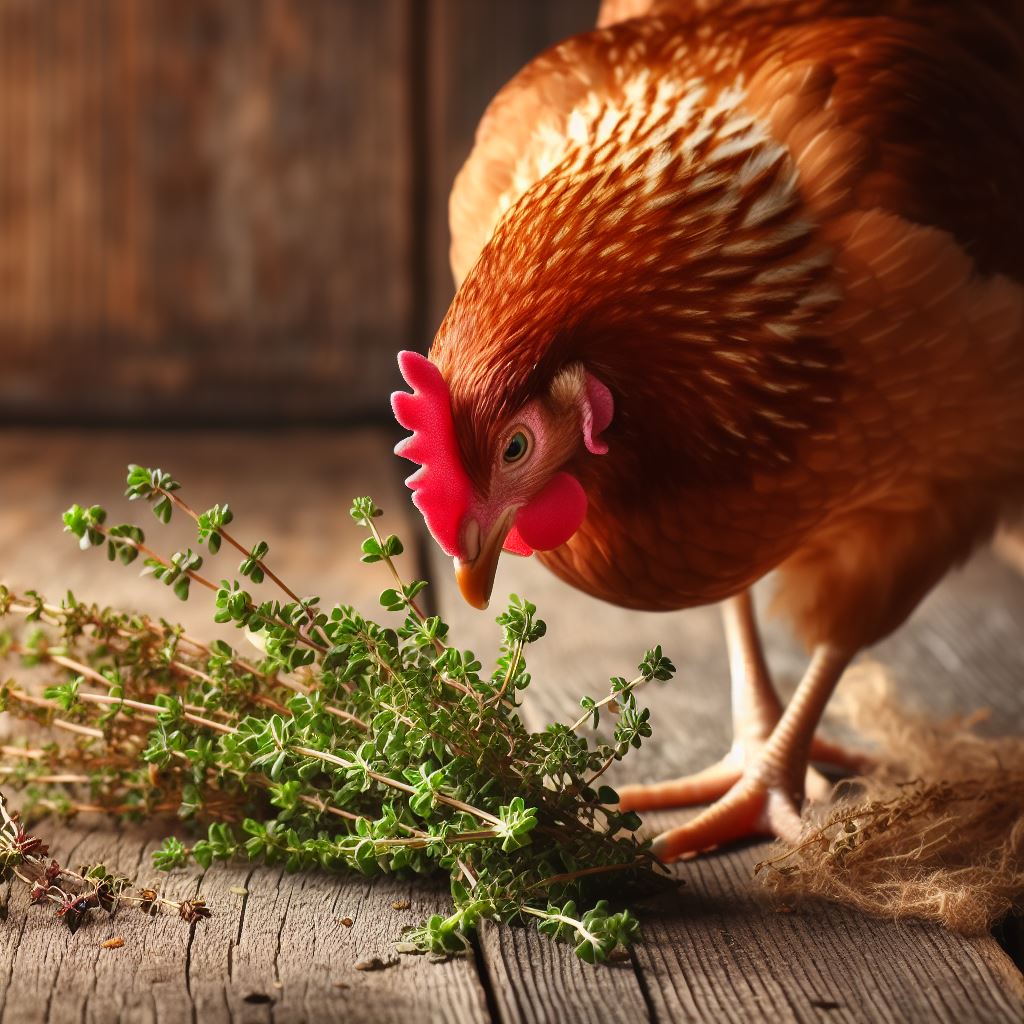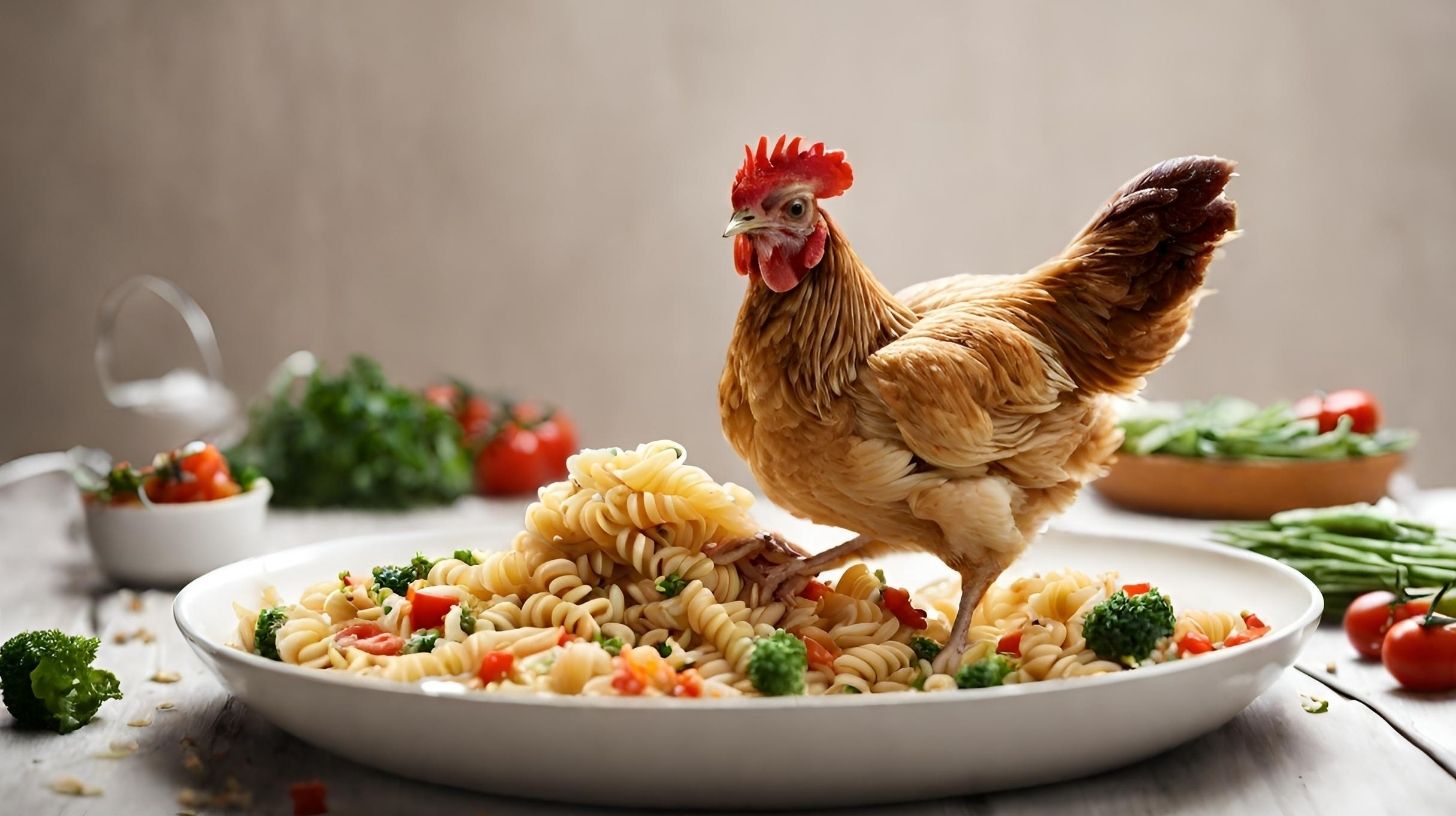Can Chickens Eat Pine Needles? The Surprising Truth

Table of content:
Pine needles are a common sight around chickens – whether it’s needles that have fallen into their run or ones they discover while free-ranging. But can chickens eat pine needles safely? Let’s take a closer look.
First, a quick primer on chicken nutrition. Chickens are omnivores and will eat a wide variety of foods, including grains, fruits, vegetables, bugs, worms, mice and more. Their main diet focuses on commercially produced chicken feed in the form of:
- Layer pellets – for hens laying eggs
- Starter feed – for chicks
- Grower feed – for pullets and cockerels
- Scratch grains – to supplement pellets
Backyard flock owners also provide chickens with grit, oyster shells for calcium and plenty of fresh water. Free-range birds get additional nutrients from foraging on plants, insects and any other food sources they discover while wandering.
This is where pine needles sometimes come into play. Chickens are natural foragers and will peck and scratch at anything that catches their attention. So if pine needles end up in their environment, they may view them as a potential food source.
But just because chickens will eat pine needles, should they? Let’s explore further.
 Are Pine Needles Safe for Chickens to Eat?
Are Pine Needles Safe for Chickens to Eat?
Pine needles are not toxic to chickens. However, there are still risks to letting chickens eat pine needles:
- They provide minimal nutritional value
- Their high fiber content can cause digestive issues
- Dried needles pose a greater risk of impaction and blockages
So while pine needles won’t directly poison chickens, they aren’t an ideal food source. At best, they provide some environmental enrichment. At worst, they can cause serious medical complications.
Owners allowing chickens access to pine needles should monitor closely. Make sure the chickens are eating adequate feed and watch for decreased egg production or symptoms of blockage like lethargy or loss of appetite. Restrict access if issues develop.
With that said, the occasional nibble likely won’t harm an otherwise healthy chicken. Just don’t offer piles of pine needles as a dietary supplement!
Nutritional Value
Pine needles provide very little in terms of usable nutrition to chickens. Their main components are:
- Fibrous cellulose
- Lignins
- Tannins
- Terpenes and phenolic compounds
Some research also shows modest levels of protein, vitamins A, B, C and E, calcium, magnesium, phosphorus, potassium and manganese.
However, chickens lack the enzymes needed to properly break down many of these compounds. And pine needles have very tough cell walls that are difficult to digest.
So chickens gain minimal benefit from any nutrients present. From a dietary perspective, pine needles offer little beyond some roughage and environmental enrichment.
Owners should ensure proper chicken nutrition is met through quality layer feed, rather than relying on pine needles. Consider them an occasional light snack at best.
Impaction and Blockage Risks
The fibrous nature and tough cell walls also make pine needles more likely to cause digestive issues. They can pile up in the crop or compact in the gizzard and proventriculus, potentially causing dangerous obstructions.
Blockages are especially common with dried pine needles versus fresh, green ones. However, even fresh needles pose risks due to their stringy consistency and high fiber content.
Blocked digestive tracts are extremely dangerous for chickens and must be addressed immediately. Discomfort, lethargy, loss of appetite and dropping egg production are common early symptoms. As obstructions worsen, choking, respiratory distress and death can occur.
Owners noticing these issues should remove pine needle access immediately. Seeking emergency veterinary care is often necessary in severe blockage cases.
Health Benefits?
Some sources claim benefits from chickens eating pine needles such as reducing parasites, adding beneficial terpenes to eggs or improving gut health. However, no formal research backs this up according to poultry science sources.
Any anecdotal benefits likely stem from the following:
- Environmental enrichment – Having an additional food source to scratch to break up boredom. This stimulation alone can reduce stress and parasites.
- Foraging encouragement – Access to pine needles lures chickens to wooded areas. Foraging there provides more valuable plants, seeds, bugs and fungi.
So rather than the pine needles themselves, the behaviors they facilitate may offer some rewards. Still, these rewards aren’t dependent on pine needle consumption.
In short – pine needles seem to add minimal direct health benefits to chickens. They instead offer behavioral enrichment by encouraging natural foraging activities. But the needles themselves pose notable risks if consumed in excess.
Can Pine Needles Be Offered Occasionally?
Given the minimal benefits and potential issues around pine needle ingestion, they shouldn’t constitute a routine part of a chicken’s diet. Commercial feed and other more nutritive supplements should make up the bulk of their intake.
However, most experts agree pine needles in moderation pose little harm. Some situations where limited access may be appropriate include:
- Inclement weather limits normal food sources
- Part of a balanced foraging area to encourage natural behaviors
- To provide behavioral enrichment
In these cases, allowing chickens access to fallen pine needles in limited quantities can be safe if certain precautions are followed:
- Restrict dried needles, which pose a higher risk
- Quickly address any signs of decreased appetite, lethargy, drop in egg production or other concerning symptoms
- Prevent any accumulation of pine needles in the coop, run or particularly wet/muddy areas where compaction risks increase
Monitor the birds closely and remove pine needle access entirely at the first sign of an issue. When in doubt, it’s best to play it safe by not making them available at all.
Emergency Food Source
In emergencies where other foods become unavailable, pine needles and other lower-quality forages could sustain chickens for short periods.
Situations where pine needles may become “famine foods” include:
- Extreme weather events like blizzards or ice storms that block food delivery
- Predators wiping out chicken flocks away from coops
- Accidental releases where chickens are lost and must self-sustain
While far from ideal, hens may forage on pine straw and other normally avoided foods when faced with starvation. Cases of chickens eating pine needles to survive periods of food scarcity exist.
Of course, pine needles pose risks beyond their nutritional deficits. But they beat literal starvation if no other options exist in temporary crises.
Supplementing Commercial Diets
Even without dire circumstances, pine needles can supplement balanced, commercial feeds in small doses. Consider them part of a “salad bar” approach where numerous options prevent boredom.
Chickens may choose to nibble pine needles even when quality feed is available. Or foraging among pine needles may provide bugs, seeds or plants more nutritional than the needles themselves.
Offering pine straw-covered spaces near (but not inside) the main coop or runs provides mental stimulation. It encourages chickens to browse while allowing ample room for higher-quality forages. This balances enrichment goals against health risks if pine needles are directly consumed.
Discouraging Excessive Consumption
Giving chickens some pine needle access while preventing over-consumption requires careful planning. Some tips include:
- Locate pine needle areas away from food and water lines to avoid contamination
- Intersperse more enticing plants and forages among pine to dilute consumption
- Provide separate grit and oyster shell sources so pine needles don’t become a hazardous “one stop shop”
- Remove accumulated pine needles daily from muddy areas, confined spaces or high traffic zones where they risk compacting if consumed
- Eliminate access during molting periods where nutrient demands are higher
- Monitor bird droppings for evidence of undigested pine needles, which indicates over-consumption
With close oversight, limited pine needle access lets chickens express natural foraging behaviors without endangering their health. But their limitations mean poultry raisers should stay vigilant against overuse.
Are Certain Pine Needles More Dangerous Than Others?
Not all pine species share identical needle shapes, chemical profiles or shedding timelines. So risks can vary across different pine trees. Some key differences include:
- Sharper, more rigid needles pose greater impaction threats. For example, longleaf pine needles measure over a foot long with sharp ends!
- High tannins or terpene concentrations may impact digestion and palatability
- Shedding tendencies dictate needle pile availability. Loblolly pine rapidly sheds needles for example.
- Soil composition influences how quickly needles biodegrade when fallen. Acidic soils accelerate decomposition and soften needle structure faster.
Pine needles still pose lower risks than many alternate toxic plants. But particular pine species known for extensive needle drop, sharp or rigid needles and high aromatic oil content pose the greatest hazards if consumed.
Overall the differences appear relatively small. General precautions related to dried vs. fresh needles, accumulation risks or signs of digestive issues should serve as the primary guidelines when considering pine needle access.
Can Pine Needles Ever Become Beneficial?
While whole, undigested pine needles offer minimal benefits, pine Straw can serve additional functions for backyard flocks.
Coop Floor Cover Options
As a coop floor covering, pine shavings, chips or straw provide benefits beyond possible ingestion:
Table: Pine Litter Benefits as Coop Bedding
| Benefit | Notes |
|---|---|
| Absorbency | Pine absorbs 3-4x its weight in liquid, helping keep coops dry |
| Dust control | Pine litter lacks fine particulates that spark respiratory issues |
| Mite deterrence | Terpenes may repel external parasites |
| Cushioning | Soft surface protects feet and eggs |
| Insulation | Resists temperature swings to keep coops warmer |
| Odor control | Natural aromatics limit ammonia buildup |
However, even as coop litter, precautions are warranted:
- Avoid small pine particles and dust present in cheap wood shavings. Stick with larger wood chips or needle litter itself.
- Don’t use lower-cost sources meant for livestock bedding. These often contain aromatic chemical residues.
- Prevent accumulations of soiled litter through regular stirring and replacement. Compaction risks otherwise increase.
With proper pine litter selection and management, it serves as an effective coop lining. But don’t overlook impaction threats if chickens start deliberately consuming soiled pine bedding in excess.
Garden Soil Amendments
Once broken down through composting, aged pine needles offer soil benefits:
- Acidification to lower pH levels
- Water retention improvement to sandy soils
- Aeration via added organic matter
- Slow release nutrients including manganese, zinc, iron, sulfur, magnesium and more
This makes them a great dry, carbon-rich addition for outdoor compost piles provided proper moisture is maintained.
Over time the woody needles break down into humus-rich matter full of lignins, tannins and resinous compounds. Mixed into garden beds, this sustains microbiology and plant health.
Just don’t add unchecked amounts of pine needle compost to chicken runs or coops. Doing so risks fresh needle accumulation if chickens start scratching through litter seeking bits to eat.
Final Thoughts
Can chickens eat pine needles? In limited quantities, pine needles pose a relatively low toxicity threat to backyard chickens.
However, their minimal nutritional value coupled with impaction risks means they don’t constitute the best food source. Offer them occasionally as part of a balanced diet but avoid them becoming a primary component.
Monitor chicken health closely with any pine needle access to catch issues early. Restrict or eliminate access at the first sign of complications.
With prudence, pine needle ingestion can be tolerated as part of natural foraging behaviors. But never overlook their limitations compared to commercial feeds or higher quality forages. Allowing chickens unlimited pine needles can quickly lead to malnutrition or worse.
By balancing benefits against risks, pine needles can become a reasonable (if small) part of a diversified homestead feeding plan. Just emphasize moderation and quick intervention at any signs of trouble. Your flock will benefit from the enrichment without endangering their health through overindulgence.
Welcome. I’m Adreena Shanum, the proud owner of this website, and I am incredibly passionate about animals, especially poultry. I founded adreenapets.com as a labor of love, stemming from my desire to share my knowledge and experiences with poultry enthusiasts worldwide.




